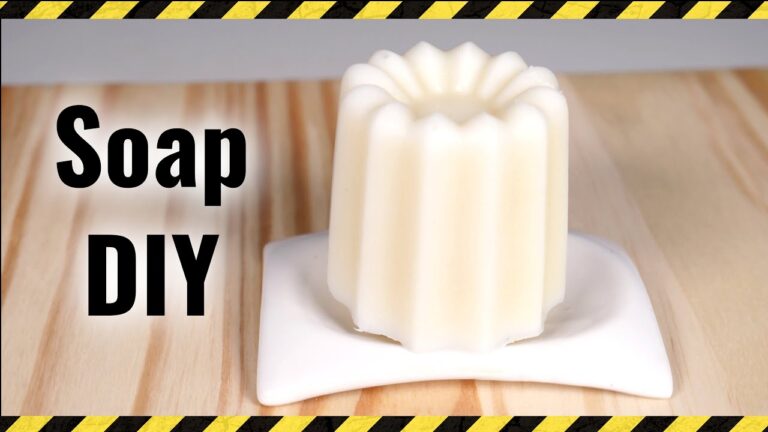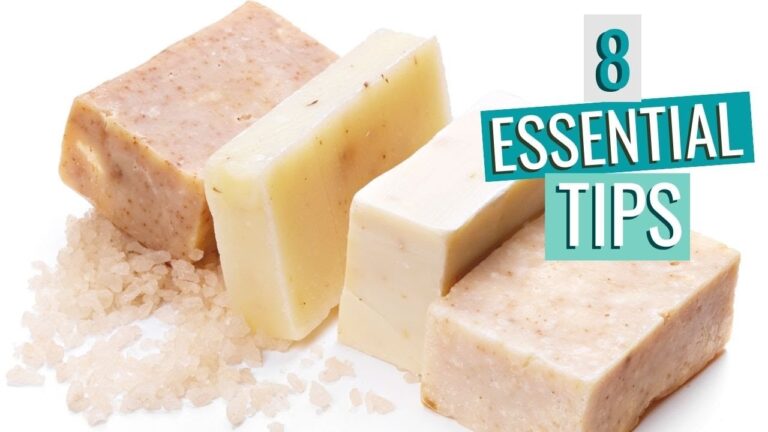The saponification process is a crucial step in the art of soap making. This chemical reaction involves the combination of fats and oils with an alkaline solution to create soap. Understanding this process is essential for creating high-quality, luxurious soaps. In this article, we will explore the ins and outs of the saponification process, including its history, scientific principles, and practical applications. Whether you’re a seasoned soap maker or a curious beginner, this guide will provide you with a comprehensive understanding of how saponification transforms simple ingredients into a beloved household essential.
- The saponification process involves combining fats or oils with a strong alkali solution to produce soap.
- During saponification, the triglycerides in the fats or oils react with the alkali to form soap and glycerin.
- The saponification process is essential in soap making as it is responsible for the conversion of raw materials into a usable product.
What is saponification in soap production?
Saponification is the chemical reaction that occurs when triglycerides react with a strong base to create fatty acid metal salts, essential for soap production. The balance between unsaturated and saturated fatty acids influences the properties of the soap, including its hardness, scent, cleaning properties, lathering ability, and moisturizing effects. This process is crucial in creating high-quality soaps that cater to different preferences and needs.
What methods are used in saponification?
Saponification is the chemical reaction where ester reacts with an inorganic base to produce alcohol and soap. This process typically occurs when triglycerides are reacted with potassium or sodium hydroxide (lye) to produce glycerol and fatty acid salt, commonly known as ‘soap’.
What is the process of saponification and what are its mechanics?
Saponification is the chemical reaction that occurs when fats react with alkali to form soap and glycerol. This process involves the hydrolysis of fats, resulting in the formation of salts of fatty acids. The saponification value of a fat is determined by the amount of alkali, such as potassium hydroxide, needed for the reaction to take place.
The Chemistry Behind Soap
Soap is a miraculous product that we often take for granted in our daily lives, but the chemistry behind it is truly fascinating. At its core, soap is made through a process called saponification, where fats and oils react with a strong base to form soap molecules and glycerin. This chemical reaction not only cleanses our skin by breaking down grease and dirt, but also creates a surfactant that helps water and oil mix, allowing for a more effective clean. Understanding the chemistry behind soap not only enhances our appreciation for this essential product, but also sheds light on the intricate science that plays a role in our everyday routines.
Step-by-Step Soap Making Guide
Are you ready to try your hand at making your own soap? With our step-by-step soap making guide, you can create beautiful, luxurious bars right in your own home. From choosing the perfect combination of oils and scents to mastering the art of swirling and shaping, our guide will walk you through each stage of the soap making process with clear, easy-to-follow instructions. Whether you’re a beginner or a seasoned soap maker, our guide will help you create stunning, one-of-a-kind soaps that you can be proud to use and share with others.
Begin your soap making journey by gathering all the necessary ingredients and equipment, then follow our guide to create your very first batch of homemade soap. With our step-by-step instructions, you’ll learn the ins and outs of soap making, from melting the oils and mixing in the lye to pouring and curing your finished bars. With our help, you’ll soon be making batches of beautiful, handmade soap that will impress your friends and family. So why wait? Dive into the world of soap making today and unleash your creativity with our step-by-step guide.
Discover the Art of Saponification
Uncover the ancient craft of saponification, where science and art converge to create beautifully handcrafted soaps. From the precise measurements of oils and lye to the creative mix of colors and scents, each bar of soap is a unique masterpiece waiting to be discovered. Dive into the world of saponification and unleash your creativity in crafting luxurious soaps that nourish the skin and soothe the soul.
Unveiling the Secrets of Soap Making
Discover the art of soap making and unlock the secrets to creating luxurious and aromatic bars that will leave your skin feeling nourished and refreshed. With the right ingredients and techniques, you can craft unique blends of scents and textures to suit your personal preferences. From choosing the perfect oils to mastering the art of swirling colors, this ancient craft offers endless possibilities for creativity and self-expression. Unveil the secrets of soap making and embark on a journey of self-care and indulgence like never before.
The saponification process in soap making is a fascinating chemical reaction that transforms oils and fats into soap. By combining an alkali with fatty acids, soap makers are able to create a versatile and essential product that has been used for centuries. Understanding the science behind saponification not only allows for the creation of high-quality soaps, but also provides insight into the intricate balance of art and chemistry in the soap making process. Whether you are a seasoned soap maker or a curious beginner, delving into the world of saponification can deepen your appreciation for this ancient craft and inspire you to create your own unique blends.



